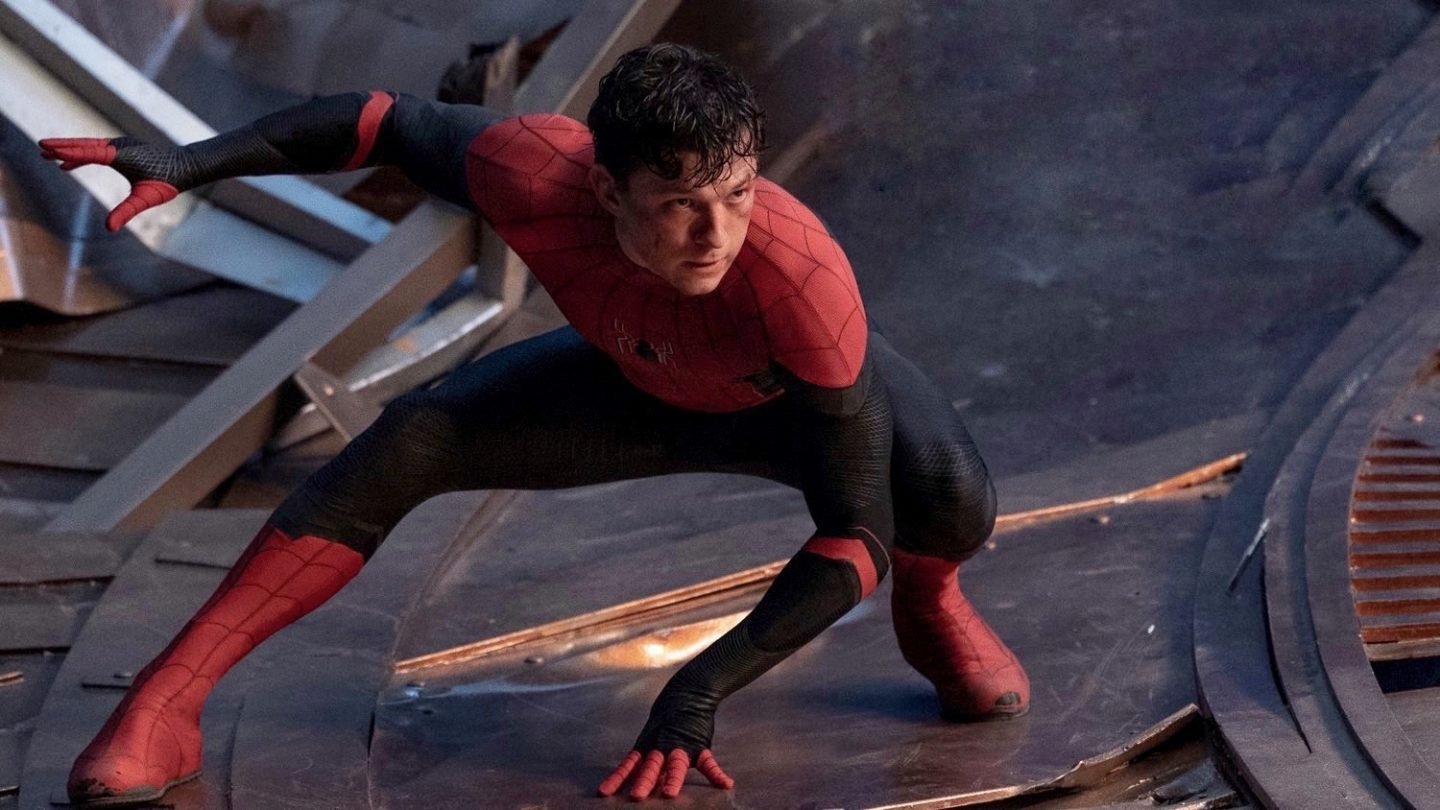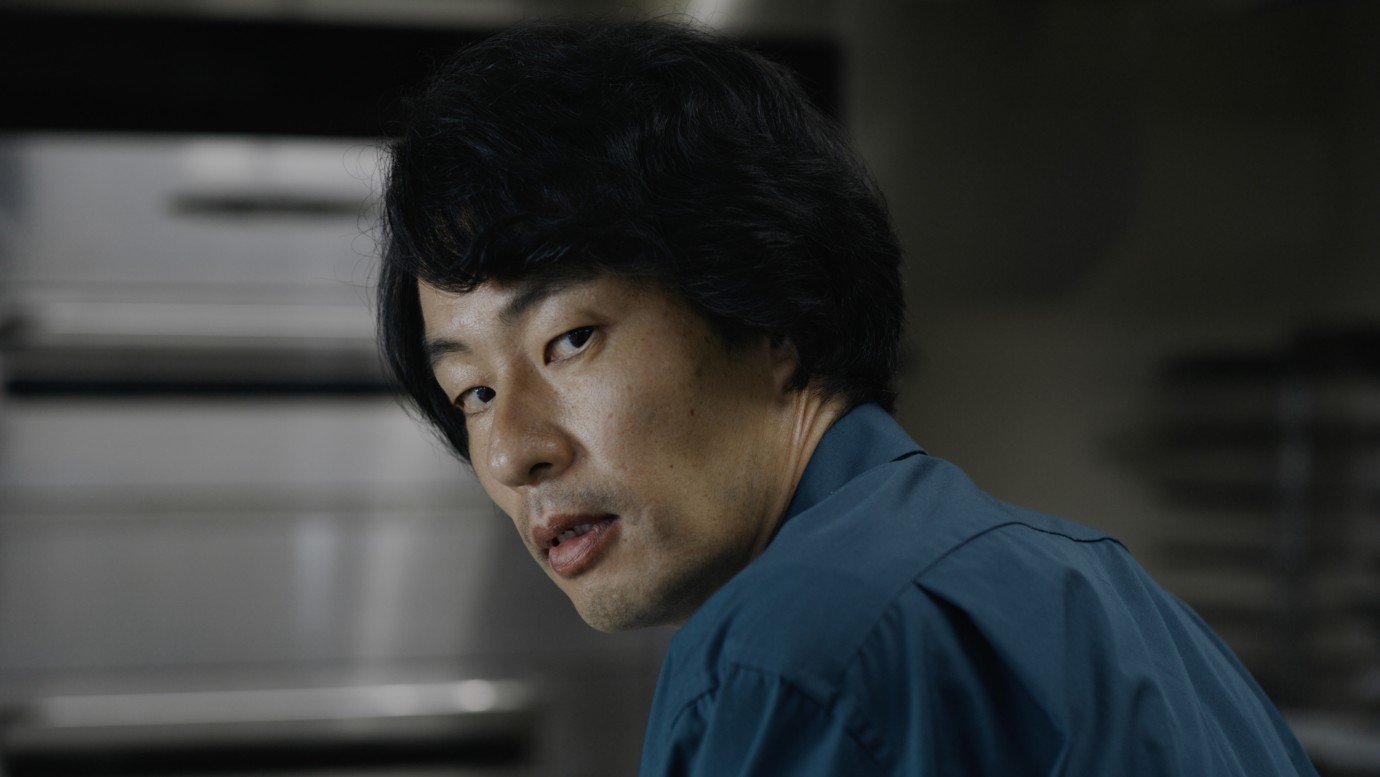Review: Spider-Man: No Way Home (2021)
It doesn’t take a genius to understand why Spider-Man: No Way Home is the biggest film of 2021—and the biggest film since the pandemic started in March 2020. It’s big, colourful, only available in theatres, and cunningly (even cynically) crafted to take advantage of viewers’ nostalgia. It executes the Marvel formula—ironic humour, moments of fan service, a narrative built around a character’s emotional awakening, a climax of slushy CGI action mixed with character payoffs—but one-ups previous films in the Marvel Cinematic Universe by interacting directly with past iterations of Spider-Man on the big screen. It forges a way forward for this version of the character by digging into the past.
No Way Home is probably most interesting as a microcosm of Hollywood at the current moment. You could dig into its approach to originality and character and intellectual property and come away with a grand thesis about how Hollywood on the whole, and Disney and Sony in particular, want to sell back to people their own pop-culture memories at full price. But it’s also worth briefly examining as a movie on its own terms, one that’s overly-long though often fun, and most affecting in the moments where it accidentally exposes the elements that are missing from Marvel’s overall approach to these superhero stories: a sense of finality and maturity and the ability to grow up and move on.
If you’re somehow reading this review without being aware of spoilers, take this as a warning that I’m not going to hide any of the plot machinations in this review. However much fans claim to watch Marvel films for the narrative surprises, these films are not really about the twists and turns of the plot. We all knew that the Winter Soldier was really Bucky Barnes, that the cosmic snap at the end of Infinity War would be short lived, that Robert Downey Jr.’s Iron Man and Chris Evans’ Captain America weren’t going to be around past Endgame, and that Tobey Maguire and Andrew Garfield would show up here as their big-screen versions of Spider-Man.
This latest spectacle is made possible by a spell that this universe’s Peter Parker (Tom Holland) asks Doctor Strange (Benedict Cumberbatch) to perform to once again hide his secret identity, which was revealed to the world at the end of Far From Home. The spell backfires and ends up drawing key villains from past Spider-Man films into the MCU world—Willem Dafoe’s Green Goblin, Alfred Molina’s Doctor Octopus, Jamie Foxx’s Electro, Thomas Haden Church’s Sandman, and Rhys Ifans’ Lizard—as well as the other Spider-Men themselves. It’s a silly idea (and a variation on what was already done in Spider-Man: Into the Spider-Verse) but does capture an essential aspect of Spider-Man as a character: for him, any attempt to gain control over his domestic life spirals out of control and becomes a problem for his superhero alter ego. In essence, the more he tries to be Peter Parker, the more he has to be Spider-Man.
There was much hallyballo about Holland’s Peter Parker not getting an origin story and rather entering the MCU in media res, joining Tony Stark’s superhero team in Captain America: Civil War. Holland’s Peter Parker doesn’t get bitten by a radioactive spider on screen. He doesn’t have an Uncle Ben. There is no speech about “With great power comes great responsibility.” There is no quest for revenge nor any hard lessons learned in the aftermath of regret. His Aunt May isn’t old, but rather young and hot and played by Marisa Tomei. He’s got amazing powers and he has been through some things (such as being snapped out of existence for five years), but he’s never been able to develop into a hero on his own terms, existing mainly in the shadow of Tony Stark (in Homecoming), and then, after Stark’s death, his legacy (in Far From Home).
This movie is an attempt to rectify that lack for Holland. It puts him through the ringer and forces him to mature and come to terms with himself as a person and a hero, someone who can only rely on himself (or, as in the climax here, versions of himself from alternate universes). By this film’s end, Spider-Man is no longer just a sidekick to Iron Man or Doctor Strange, but a hero who stands alone and can operate without the assistance or guidance of a mentor or team.
The irony is that to get there, the film has to double down on nostalgia and revisit the past iterations of the character. It brings in Tobey Maguire and Andrew Garfield a little over halfway into the movie. There’s a humorous set piece where the two Peters briefly clash and then calm each other down and have to convince Spider-Man’s best friend (Jacob Batalon) and girlfriend (Zendaya) that they are in fact both Peter Parker. Then the three Peters finally meet and fans get to gush about the shot of the three of them straddling the top of the Statue of Liberty in their hero poses—which is cool in concept, but about as visually arresting as the previz sequence it’s based on.
The new (or old) Spider-Men set about to help Holland’s Spider-Man heal the various villains before sending them back to their old universes. It’s a common trope that Spider-Man’s villains are not evil men, but scientists driven insane by their experiments. Thus, their deaths in the previous films can be seen as unfortunate and unnecessarily—it’s key that for Holland’s Spider-Man, his first villain, Vulture, is not killed but rather put in prison at the end of Homecoming, and the death of his second villain, Mysterio, is the cause of his immediate crisis in No Way Home. The film argues that Spider-Man shouldn’t kill his villains or let them die, and this film is about rectifying that across all previous Spider-Man films.
The actual battle that leads up to the Peters’ eventual victory and curing of the villains is beside the point and not the real climax of the picture, despite how it’s structured. Rather, that moment comes earlier, when Garfield and Maguire seek out Holland who is mourning the death of Aunt May at the hands of Green Goblin. Finally, Holland’s Peter is confronted with finality and loss that hits home—it’s as if the film is acknowledging that Iron Man’s death is only consequential for Peter in his material existence, not his emotional one. To help Peter understand that revenge rings hollow and will only bring further pain, the other Peters talk about their great losses. Maguire’s Peter talks about losing Uncle Ben. Garfield’s Peter talks about losing Gwen Stacey.
It’s the latter moment which is the most affecting in the film. Garfield’s anguish is so evident on his face and in the way he struggles to say Gwen’s name. He’s the most chipper Spider-Man of the three (both in his own films and here), but he’s the one who suffers the most severe loss. Rather than allow that to become a contradiction for how his character is constructed, Garfield helps us see how being the Friendly Neighbourhood Spider-Man is a way of compensating for the pain—how the quest to be a hero allows him to escape the fragility of his domestic life. Whatever you may think of Garfield’s The Amazing Spider-Man films (which are fairly mediocre, but also enjoyable), it’s clear that Garfield was very good in the role and likely deserved a more substantial run as the character. But it’s certainly odd to realize that the least-popular Spider-Man is the emotional heart of the latest Spider-Man film, which is ostensibly about the new version of Spider-Man whose films and existence were meant to course-correct after the artistic failures of that Spider-Man’s films.
But such are the contradictions of this film: it’s fun as a movie, but troubling as a statement about where Hollywood is headed. It wants to move forward, but literally dredges up the characters from the past to do so. It understands this specific character, but betrays an anxiety about how he’s meant to exist in the current cinematic universe model of storytelling. It seems to grasp the power of cinema scene-to-scene, but its embodiment of larger studio dictates is what is hollowing cinema in our current pop-culture moment. It’s as if the filmmakers cannot help themselves from implicating the hollowness of their artistic approach to making a satisfying blockbuster.
The contradictory nature of the film is perhaps best embodied by the title: No Way Home. It’s clearly referencing the adage taken from the Thomas Wolfe novel, You Can’t Go Home Again, but there is such an irony in a movie that demonstrates that you, indeed, can. That’s the entire Marvel ethos. Love the new Tom Holland Spider-Man but feel nostalgia for the Tobey Maguire and Andrew Garfield Spider-Men? Don’t worry. You can have them altogether! You don’t need to move on, get over the past, grow up, find new things to care about or new people to spend time with. Peter Parker learns the lesson here. The viewer doesn’t. That’s the strange paradox of Marvel. Even as its characters grow, it fights to keep its viewers in stasis. It’s like Jay Gatsby talking to Nick Carraway on his West Egg dock. Arrested development is the secret to its commercial success. And so we get a movie like No Way Home: enjoyable, even occasionally affecting as an individual picture, troubling as a trend.
6 out of 10
Spider-Man: No Way Home (2021, USA)
Directed by Jon Watts; written by Chris McKenna and Erik Sommers, based on Spider-Man created by Stan Lee and Steve Ditko; starring Tom Holland, Zendaya, Benedict Cumberbatch, Jacob Batalon, Jon Favreau, Jamie Foxx, Willem Dafoe, Alfred Molina, Rhys Ifans, Thomas Haden Church, J. K. Simmons, Benedict Wong, Tony Revolori, Marisa Tomei, Andrew Garfield, Tobey Maguire.



Darren Aronofsky ultimately cannot manage the tone of this black comedy crime film.